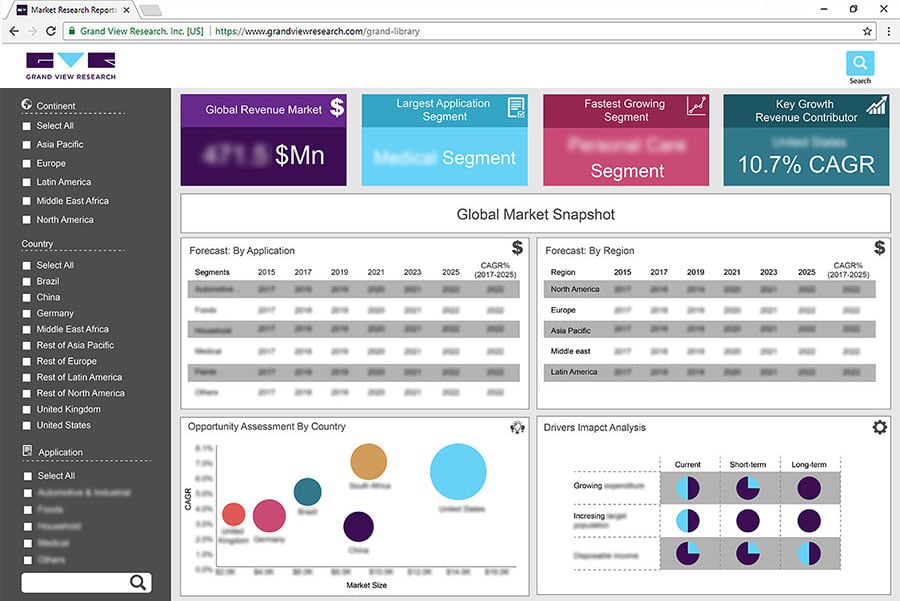
India Electric Vehicle Market Size, Share & Trends Analysis Report By Product (BEV, PHEV), By Vehicle Type (Passenger Cars, Commercial Vehicles), And Segment Forecasts, 2021 - 2030
- Report ID: GVR-4-68039-640-4
- Number of Report Pages: 110
- Format: PDF, Horizon Databook
- Historical Range: 2016 - 2019
- Forecast Period: 2021 - 2030
- Industry: Technology
Table of Contents
Chapter 1 Methodology & Scope
1.1 Market Segmentation & Scope
1.2 Market Definition
1.3 Information Procurement
1.3.1 Purchased Database
1.3.2 GVR's Internal Database
1.3.3 Secondary Sources & Third - Party Perspectives
1.3.4 Primary Research
1.4 Information Analysis
1.5 Market Formulation & Data Visualization
1.6 Data Validating & Publishing
Chapter 2 Executive Summary
2.1 Market Outlook
Chapter 3 Market Variables, Trends, and Scope
3.1 Penetration & Growth Prospect Mapping
3.2 India Electric Vehicle Market - Value Chain Analysis
3.3 India Electric Vehicle Market Dynamics
3.3.1 Market Drivers Analysis
3.3.2 Market Restraint Analysis
3.4 India Electric Vehicle Industry Analysis - PESTLE
3.5 India Electric Vehicle Industry Analysis - Porter's Five Forces
Chapter 4 India Electric Vehicle Market: Product Estimates & Trend Analysis
4.1 Product Movement Analysis & Market Share, 2020 & 2030
4.2 Market Size & Forecasts and Trends Analysis, 2016 - 2030 (USD Million, Units)
4.2.1 BEV
4.2.2 PHEV
Chapter 5 India Electric Vehicle Market: Vehicle Type Estimates & Trend Analysis
5.1 Vehicle Type Movement Analysis & Market Share, 2020 & 2030
5.2 Market Size & Forecasts and Trends Analysis, 2016 - 2030 (USD Million, Units)
5.2.1 Passenger Cars
5.2.2 Commercial Vehicles
Chapter 6 Competitive Landscape
6.1 Key Company Analysis, 2020
6.2 Company Profiles
6.2.1 Audi AG
6.2.1.1 Company Overview
6.2.1.2 Financial Performance
6.2.1.3 Product Benchmarking
6.2.1.4 Strategic Initiatives
6.2.2 BMW AG
6.2.2.1 Company Overview
6.2.2.2 Financial Performance
6.2.2.3 Product Benchmarking
6.2.2.4 Strategic Initiatives
6.2.3 Hyundai Motor India.
6.2.3.1 Company Overview
6.2.3.2 Financial Performance
6.2.3.3 Product Benchmarking
6.2.3.4 Strategic Initiatives
6.2.4 Jaguar Land Rover Limited
6.2.4.1 Company Overview
6.2.4.2 Financial Performance
6.2.4.3 Product Benchmarking
6.2.4.4 Strategic Initiatives
6.2.5 Mahindra & Mahindra Ltd
6.2.5.1 Company Overview
6.2.5.2 Financial Performance
6.2.5.3 Product Benchmarking
6.2.5.4 Strategic Initiatives
6.2.6 Mercedes - Benz AG
6.2.6.1 Company Overview
6.2.6.2 Financial Performance
6.2.6.3 Product Benchmarking
6.2.6.4 Strategic Initiatives
6.2.7 MG Motor India Pvt. Ltd.
6.2.7.1 Company Overview
6.2.7.2 Financial Performance
6.2.7.3 Product Benchmarking
6.2.7.4 Strategic Initiatives
6.2.8 Olectra Greentech Limited
6.2.8.1 Company Overview
6.2.8.2 Financial Performance
6.2.8.3 Product Benchmarking
6.2.8.4 Strategic Initiatives
6.2.9 Tata Motors
6.2.9.1 Company Overview
6.2.9.2 Financial Performance
6.2.9.3 Product Benchmarking
6.2.9.4 Strategic Initiatives
6.2.10 Toyota Motor Corporation
6.2.10.1 Company Overview
6.2.10.2 Financial Performance
6.2.10.3 Product Benchmarking
6.2.10.4 Strategic Initiatives
List of Tables
Table 1 List of abbreviations
Table 2 India electric vehicle market, 2016 - 2030 (USD Million)
Table 3 India electric vehicle market, 2016 - 2030 (Units)
Table 4 India electric vehicle market, by product, 2016 - 2030 (USD Million)
Table 5 India electric vehicle market, by product, 2016 - 2030 (Units)
Table 6 India electric vehicle market, by vehicle type, 2016 - 2030 (USD Million)
Table 7 India electric vehicle market, by vehicle type, 2016 - 2030 (Units)
List of Figures
Fig. 1 India electric vehicle market research methodology
Fig. 2 India electric vehicle market data triangulation technique
Fig. 3 India electric vehicle market primary research scope
Fig. 4 India electric vehicle market: Market segmentation
Fig. 5 India electric vehicle market: Market snapshot, 2020
Fig. 6 India electric vehicle market: Value chain analysis
Fig. 7 India electric vehicle market: Penetration and growth prospect mapping
Fig. 8 India electric vehicle market: Key company analysis, 2020
Fig. 9 India electric vehicle market: PESTLE analysis
Fig. 10 India electric vehicle market: Porter's five forces analysis
Fig. 11 India electric vehicle market: Product segment analysis, 2016 - 2030 (USD Million, Units)
Fig. 12 India electric vehicle market: Vehicle type segment analysis, 2016 - 2030 (USD Million, Units)



